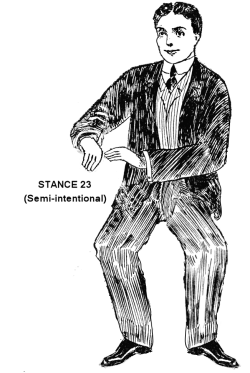 Dan Dennett famously based his view of consciousness on the intentional stance. According to him the attribution of intentions and other conscious states is a most effective explanatory strategy when applied to human beings, but that doesn’t mean consciousness is a mysterious addition to physics. He compares the intentions we attribute to people with centres of gravity, which also help us work out how things will behave, but are clearly not a new set of real physical entities.
Dan Dennett famously based his view of consciousness on the intentional stance. According to him the attribution of intentions and other conscious states is a most effective explanatory strategy when applied to human beings, but that doesn’t mean consciousness is a mysterious addition to physics. He compares the intentions we attribute to people with centres of gravity, which also help us work out how things will behave, but are clearly not a new set of real physical entities.
Whether you like that idea or not, it’s clear that the human brain is strongly predisposed towards attributing purposes and personality to things. Now a new study by Spunt, Meyer and Lieberman using FMRI provides evidence that even when the brain is ostensibly not doing anything, it is in effect ready to spot intentions.
This is based on findings that similar regions of the brain are active both in a rest state and when making intentional (but not non-intentional) judgements, and that activity in the pre-frontal cortex of the kind observed when the brain is at rest is also associated with greater ease and efficiency in making intentional attributions.
There’s always some element of doubt about how ambitious we can be in interpreting what FMRI results are telling us, and so far as I can see it’s possible in principle that if we had a more detailed picture than FMRI can provide we might see more significant differences between the rest state and the attribution of intentions; but the researchers cite evidence that supports the view that broad levels of activity are at least a significant indicator of general readiness.
You could say that this tells us less about intentionality and more about the default state of the human mind. Even when at rest, on this showing, the brain is sort of looking out for purposeful events. In a way this supports the idea that the brain is never naturally quiet, and explains why truly emptying the mind for purposes of deep meditation and contemplation might require deliberate preparation and even certain mental disciplines.
So far as consciousness itself is concerned, I think the findings lend more support to the idea that having ‘theory of mind’ is an essential part of having a mind: that is, that being able to understand the probable point of view and state of knowledge of other people is a key part of having full human-style consciousness yourself.
There’s obviously a bit of a danger of circularity there, and I’ve never been sure it’s a danger that Dennett for one escapes. I don’t know how you attribute intentions to people unless you already know what intentions are. The normal expectation would be that I can do that because I have direct knowledge of my own intentions, so all I need to do is hypothesise that someone is thinking the way I would think if I were in their shoes. In Dennett’s theory, me having intentions is really just more attribution (albeit self-attribution), so we need some other account of how it all gets started (apparently the answer is that we assume optimal intentions in the light of assumed goals).
Be that as it may, the idea that consciousness involves attributing conscious states to ourselves is one that has a wider appeal and it may shed a slightly different light on the new findings. It might be that the base activity identified by the study is not so much a readiness to attribute intentions, but a continuous second-order contemplation of our own intentions, and an essential part of normal consciousness. This wouldn’t mean the paper’s conclusions are wrong, but it would suggest that it’s consciousness itself that makes us more ready to attribute intentions.
Hard to test that one because unconscious patients would not make co-operative subjects…
